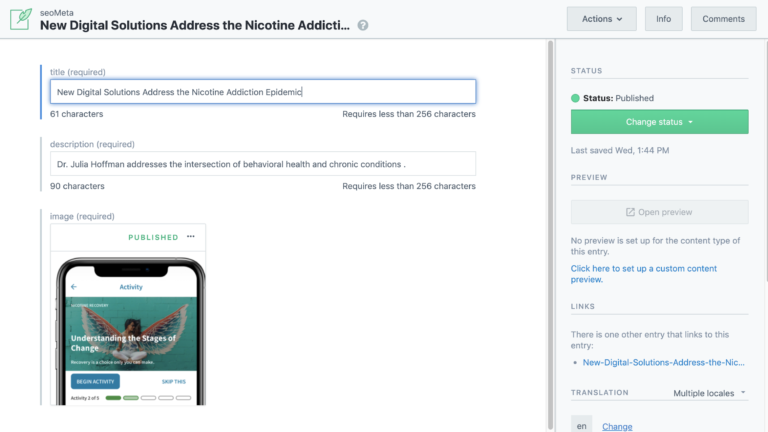Livongo is a digital health organization committed to bettering the quality of life for individuals suffering from chronic illnesses. Based in San Francisco, Livongo is a large player in healthcare technology. In preparation for going public in summer 2019, Livongo needed to update their website to improve WCAG accessibility and overall user experience.
In my position as head of product at Archbolt, I designed and managed the development of the entire landing page and associated content management back end (built using Contentful). I also provided go-live support on the day of Livongo's IPO in late July!
We decided to divide the project into two phases. The first phase had a clear and direct goal: get a website up and running for the day of the IPO with a new homepage, blog page, and investor relations page. The second phase was focused on building a CMS (via Contentful) that allowed modular creation of other web pages to give Livongo’s website a dynamic feel and provide high levels of customization.
The process kicked off by examining top competitors in the field. Significant time was spent identifying user personas and cohorts to help funnel users to relevant channels once they landed on Livongo’s website. We worked with Livongo’s team to find the right narrative for the Landing page.

I took charge of the UI and UX for this project, working on a daily basis to receive and action feedback from Livongo. I would take a first pass at implementing feedback from Livongo, and once confirmed, I handed off the updating process to our design partners. At first, three different wireframe concepts were shared to determine the general direction and layout for Livongo. Once a final direction was established, we prepared 3 different styles. Over 10 working days, 3 wireframes were submitted for review, 3 styles were applied to the selected wireframe, and revisions and edits were made to the selected UI design.
The Phase 1 website passed final QA two days prior to the IPO. On the day of the IPO, I stayed up for 14 hours helping resolve an issue with the stock ticker integration. After we started Phase 2, we were able to iterate rapidly and expand functionality from one sprint to the next. The core objective of Phase 2 was to expand the library of components. By the conclusion of Phase 2, we took Livongo from 8 to 20 components which could be dynamically configured to create new pages.

The Livongo website redesign required rapid iteration, adaptive thinking, and flexible teams. In the end, we delivered a solid core product that has grown with Livongo's evolving needs. Livongo continues to use the same core architecture we built, and maintain ongoing development with their in-house team.